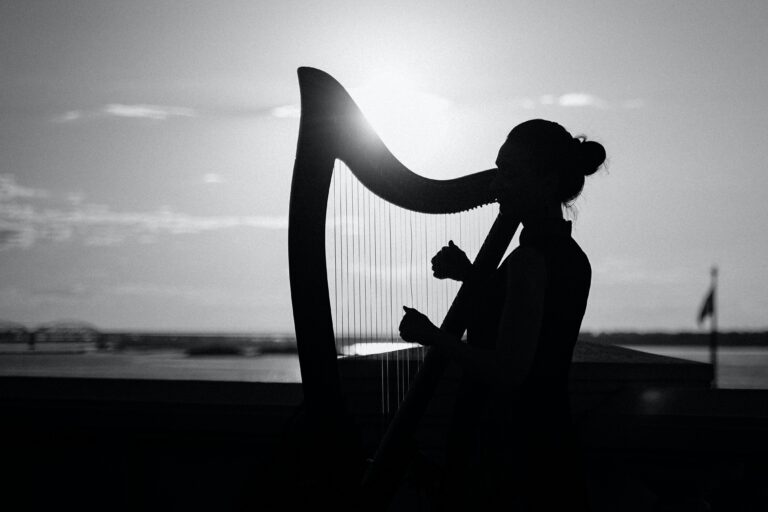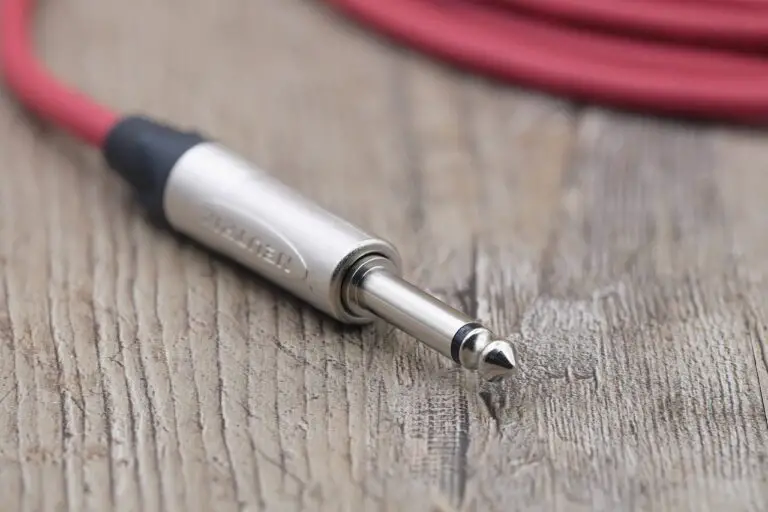Tenor vs Alto Saxophones
Ah, the perplexing puzzle of picking between the alto and the tenor saxophone!
It’s a melodic journey where each path reveals a distinct, resonant world, ready to add a pulsating beat to your musical adventures.
The alto saxophone, with its petite frame, projects a sound that’s both bright and piercing. Meanwhile, the tenor saxophone, robust and undeniably smooth, cascades through the air with its deep, rich tones, offering a warm embrace to those sultry, lower notes.
But wait, there’s more than just a choice here—it’s an invitation to dive deep into a universe of sound, where every note tells a story, and each saxophone becomes a character in your melodic narrative.
Buckle up as we plunge into a rhythmic exploration, unwinding the tales of the alto and tenor saxophones, and deciphering which instrument might just coax the music out of your very soul.
History and Development of the Saxophone
The saxophone birthed in the inventive mind of Adolphe Sax, back in the vibrant 1800s.
A Belgian maestro of instrument-making, Sax sought to stitch a harmonious bridge between the hearty, boisterous trumpets and the soft, whispered secrets of woodwinds.
And so, in 1846, the saxophone was born and patented—a gleaming, conical delight with a single-reed mouthpiece, exuding both the playful spirit of woodwinds and the bold charisma of brass instruments.
First stealing the hearts of military bands, and gradually seducing composers and jazz musicians, the saxophone swiftly danced its way into the global music arena.
Alto vs Tenor Saxophone Origins
Alto Saxophone:
The charming alto, tuning in with its E♭ pitch, swiftly claimed its spot as a darling amongst both classical composers and jazz virtuosos.
Compact, boasting a sound that flutters bright and lively across tunes, the alto has been romancing musicians across genres—from orchestrals to blues, to solos that pierce the soul.
With its sweet tonality, it carved itself into the very essence of iconic jazz and blues numbers, ensuring a timeless presence.
Tenor Saxophone:
Enter the tenor: a larger-than-life presence, crooning in a B♭ pitch, enveloping listeners in a warm, rich sound.
The tenor, with its commanding frame and bolder mouthpiece, introduced to the world a melody that was not just heard but felt, deeply, resonating within the jazz and rock ‘n’ roll souls.
Think John Coltrane, think Sonny Rollins—musicians who pushed the tenor into the spotlight, showcasing its prowess to craft complex, heart-tugging melodies.
What Are The Main Differences Between Alto and Tenor Saxophones?
While they may share a familial resemblance, beneath the glossy brass exteriors lie worlds of differences, crafting distinctive auditory adventures for those who embark upon their musical paths.
Size
Alto Saxophone: The Compact Choice
The alto saxophone isn’t very big, making it a cool choice for young players or those trying a saxophone for the first time.
Imagine it like a friendly, small pet that’s easy to handle and carry around! It’s about 23 inches long and doesn’t weigh much—only about 5 pounds.
Because it’s smaller and lighter, the alto saxophone makes a bright and happy sound that can easily dance through the air. It’s like the chirpy song of a cheerful bird, flying high and light.
Tenor Saxophone: The Larger Option
Now, meet the tenor saxophone, which is like the alto’s big brother. It’s heftier, at about 31 inches long and weighing between 8 to 9 pounds.
Imagine a big, gentle dog with a deep, comforting bark—that’s like the tenor! Its size helps it make a deep, warm, and smooth sound, kind of like a soft, cozy blanket of music that wraps around you.
Playing the tenor might need a bit more muscle and stretch in your fingers because it’s bigger and the keys are a bit farther apart.
Playing the Two

The size of these saxophones makes them feel different to play and produces different kinds of sounds.
The alto might be easier to hold and play for some people because it’s smaller. Meanwhile, the tenor, though it needs a bit more strength to play, gives off a sound that’s rich and full.
Musical Roles
When we talk about saxophones in music, the alto and tenor saxes usually have different jobs to do. Their sounds and how they are used in bands or groups make them unique in their own ways.
Alto Saxophone: The Front and Center Sound
The alto saxophone often plays the main melody because it has a sound that stands out. It has a bright and strong sound that people can easily hear over other instruments.
Tenor Saxophone: The Supporting Sound
The tenor saxophone usually plays harmony, which means it supports and adds to the sound of the group, giving the music more depth with its lower and smoother sound.
It’s like the backdrop that lets the main melody (often played by instruments like the alto sax) shine.
But the tenor sax can also play the main tune, especially in certain kinds of music like jazz and rock, where its deep, soulful sound can really touch the audience.
How They Work Together
The alto and tenor saxophones often work together in music.
The alto usually plays the main tune that you might hum along to, while the tenor adds extra sound that makes the music fuller.
They both have important jobs to make sure the music feels complete and enjoyable.
The saxophone sings its songs through the player’s breath, shaped and colored by the mouthpiece and reed – two critical components that make each note flutter and soar. Alto and tenor saxophones, while sharing the same foundational mechanics, offer distinct experiences in playability due to their different mouthpiece and reed sizes.
Mouthpiece and Reed: The Nuances of Playability
Alto Saxophone: A Friendly Beginning
The alto saxophone typically features a smaller mouthpiece and uses a thinner reed, which can be easier to control, especially for beginners.
The air travels a shorter distance, which might make it a bit easier to produce sound consistently.
It requires less air and a slightly tighter embouchure (that’s the way you shape your mouth and use your facial muscles while playing) to create its sprightly, energetic notes.
For young players or those with smaller facial structures, the alto’s mouthpiece can be less daunting and more immediately gratifying.
Tenor Saxophone: A Richer Challenge
The tenor saxophone, with its larger mouthpiece and thicker reed, demands more air to explore its deep, soulful tones.
The bigger reed and mouthpiece can make the tenor a bit more challenging for newcomers to play though.
But that rich, warm sound it produces? That’s the tenor’s larger mouthpiece and reed working their magic!
It might be a little challenging at the start, but many find the tenor’s lush sounds well worth the effort.
Fine-Tuning Your Sound
Regardless of the saxophone type, the combination of mouthpiece and reed is crucial in shaping your sound and playability.
Musicians often experiment with different mouthpiece shapes and reed strengths to find their preferred combination.
Some might prefer a bright, punchy tone, while others may seek a smooth, dark sound.
It’s a bit like adjusting the settings on your favorite video game controller to get everything just right.
Pros and Cons: Tenor Saxophone
Advantages
- Deep, Rich Sound: The tenor saxophone delivers a warm, rich, and resonant sound that’s often favored in jazz and rock genres.
- Versatile in Genres: Its soulful tone makes it versatile, finding a home in various musical genres, from sultry blues to vibrant rock.
- Solo Capabilities: The expressive, deep voice of the tenor saxophone makes it a poignant choice for emotive solos and can beautifully convey a wide array of emotions.
- Physical Stability: For some, the larger size provides a stable feeling and can be comfortably rested on the player’s shoulder during performance.
Limitations
- Size and Weight: The larger size and heavier weight can be a challenge for smaller players or those with physical limitations.
- Initial Playability: The wider mouthpiece and larger reed might present an initial challenge to beginners in producing a clear and steady tone.
- Transportation: Moving and storing the tenor saxophone might require extra effort and consideration due to its size.
- Cost: Tenor saxophones, and their accessories and maintenance, can be more expensive compared to altos.
Pros and Cons: Alto Saxophone
Advantages
- Friendly to Beginners: The smaller size, lighter weight, and easier breath control make the alto saxophone a friendly option for beginners.
- Bright, Clear Sound: The alto produces a bright and clear sound, making it a lively lead in various music settings.
- Ease of Transport: Being more compact, the alto saxophone is easier to transport and handle.
- Lower Maintenance Cost: Generally, alto saxophones can be a bit more budget-friendly in terms of purchase, accessories, and maintenance.
Limitations
- Sound Limitation: While it’s brilliant in its own right, the alto can’t achieve the deep, rich tones that tenor saxophones produce.
- Limited in Certain Genres: In some genres, especially those that favor deeper tones, the alto might be a bit limited in expressive capabilities.
- Physical Comfort: For players with larger hands, the smaller key spacing might be less comfortable.
- Overbearing Brightness: In some musical contexts, the alto’s bright sound might be a tad overbearing or piercing
Choosing The Right Saxophone
Between the tenor and alto saxophones, both offering their own captivating melodies and challenges, how does one decide?
Factors to Consider When Making a Choice
- Physical Comfort: Consider the size and weight of the saxophone in relation to your own physique. Can you hold and manage the sax comfortably for extended periods? Is your hand shape suited to the key layout?
- Tonal Preference: Reflect on the sound that resonates with you. Do you gravitate towards the bright, punchy notes of the alto, or the deep, warm melodies of the tenor?
- Musical Genres: Think about the styles of music you want to explore. Different genres might favor one saxophone over the other.
- Band Role: Consider your role in a band or ensemble. Do you aspire to stand out with lead melodies or provide a rich harmonic backdrop?
- Budget: Evaluate your budget for purchasing the saxophone, as well as maintaining it and buying necessary accessories.
- Transport and Storage: Think about your capability to transport and store the saxophone. Is it practical to manage a larger instrument like the tenor, or is the compact alto more suitable?
- Learning Curve: Consider your patience and dedication towards mastering the instrument. Are you prepared for the potentially steeper learning curve of the tenor?
Personal Preferences and Musical Goals
- The Pursuit of a Particular Sound: Your personal sound preference plays a vital role. Some may prefer the effervescent, lively sound of the alto. However, others might be drawn to the soulful, expressive depth of the tenor.
- Future Aspirations: Envision where you see yourself in your musical journey. If you aspire to perform solos in a jazz band, perhaps the tenor could be your partner in crime. Alternatively, if classical performances or marching bands are in your sights, the alto might call to you.
- Inspirations: Think about the musicians who inspire you. Do you want to follow in the footsteps of a sultry tenor saxophonist? Or does the agile, bright sound of an alto player captivate you?
- Your Unique Voice: Ultimately, your choice should reflect your unique voice and expression. Which saxophone speaks to you and feels like an extension of your own voice?
Choosing between the tenor and alto saxophone is more than a matter of size and sound. It’s about finding an instrument that resonates with you and aligns with your goals as a musician.
Maintenance And Care For Tenor & Alto Saxophones
Preserving the eloquence and vibrancy of your saxophone entails a commitment to meticulous maintenance and care.
Nurturing your instrument ensures not only longevity but also consistent, high-quality sound through every performance. So, how does one properly care for such a complex and heavy instrument?
Tips for Saxophone Maintenance
- Regular Cleaning: Utilize a cleaning swab after each playing session to remove moisture from inside the saxophone, preventing buildup and potential damage.
- Exterior Polishing: Use a soft cloth to gently wipe and polish the exterior of your saxophone, safeguarding its aesthetic shine and preventing potential corrosion.
- Reed Care: Ensure reeds are properly stored in a reed case, shielded from damage and warping, and always have spares handy.
- Mouthpiece Maintenance: Clean the mouthpiece with warm, soapy water on a weekly basis. This will prevent the accumulation of bacteria and grime.
- Pad and Cork Care: Ensure pads and corks are in good condition and replace them if wear is noticeable. For cork joints, use cork grease regularly to maintain a smooth assembly and disassembly.
- Regular Checkups: Periodically examine the saxophone for any loose screws, bent keys, or other issues that might affect playability and sound.
- Professional Maintenance: Schedule a professional checkup and maintenance session annually with a qualified technician to address any wear and tear and calibrate your instrument.
Common Issues and Troubleshooting
- Sticky Pads: If pads become sticky, use cleaning paper to clean between the pad and the tone hole.
- Squeaking: Persistent squeaking may be a result of a misaligned reed or issues with embouchure. Adjust the reed position and ensure your mouth is forming the correct shape while playing.
- Difficulty in Producing Sound: If you’re struggling to get a sound out, check for potential obstructions in the saxophone, reed issues, or examine your breathing and embouchure technique.
- Inconsistent Intonation: If the saxophone is not staying in tune, confirm the mouthpiece is positioned correctly and that there are no issues with the reed, pads, or corks.
- Loose or Rattling Parts: If you notice any loose screws or rattling parts, utilize a screwdriver to gently tighten them, ensuring all parts are secure.
Dedicating time to thorough maintenance will sustain the integrity of your saxophone and fortify its sound.
Final Thoughts
Choosing between the alto and tenor saxophone might seem tricky, but knowing their differences as laid out above can help!
The alto saxophone is smaller, has a bright and cheery sound, and is often a bit easier for beginners.
Alternatively, the tenor saxophone is bigger, makes deeper and warmer sounds, and can be a little heavier to hold.
No matter what, both saxophones have lots of fun and exciting musical adventures to offer you.









